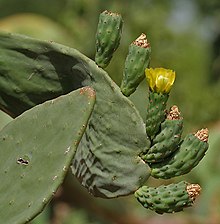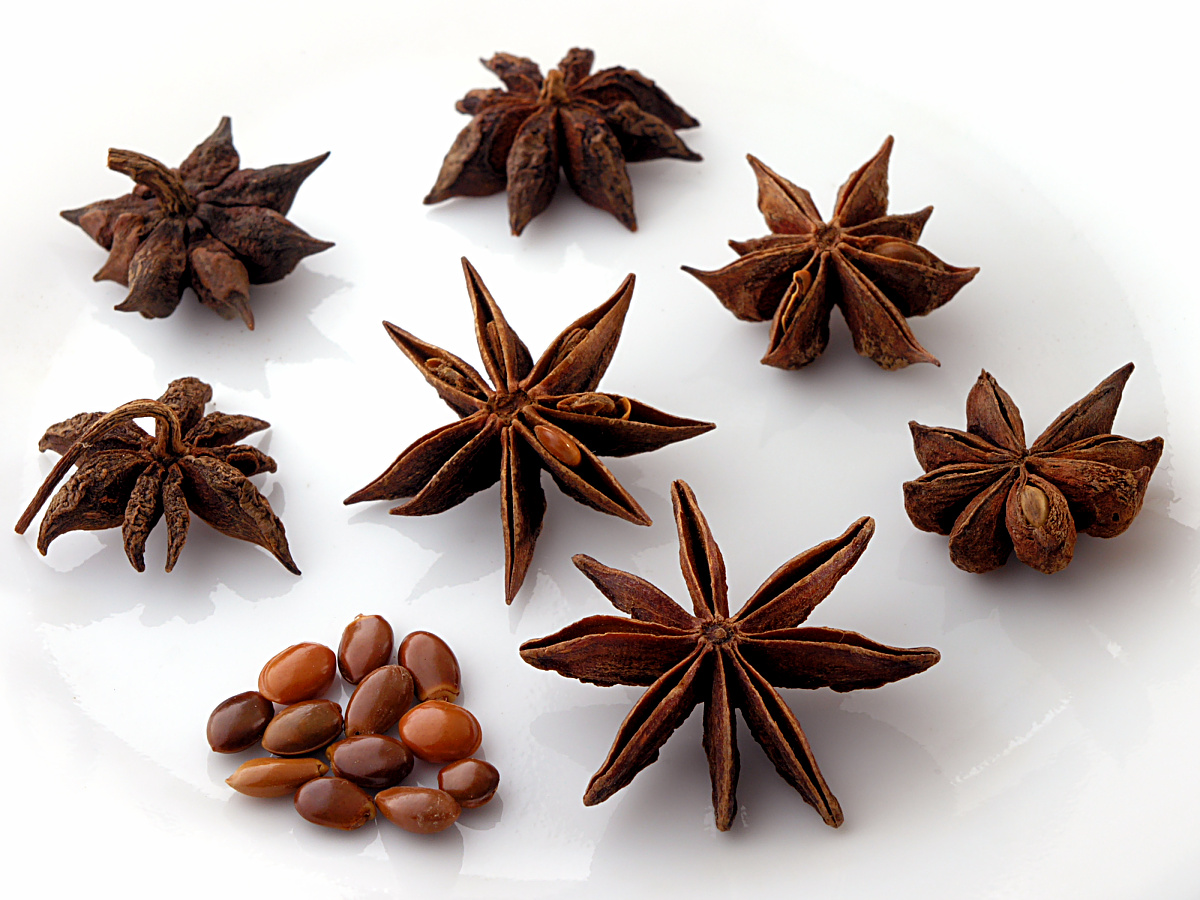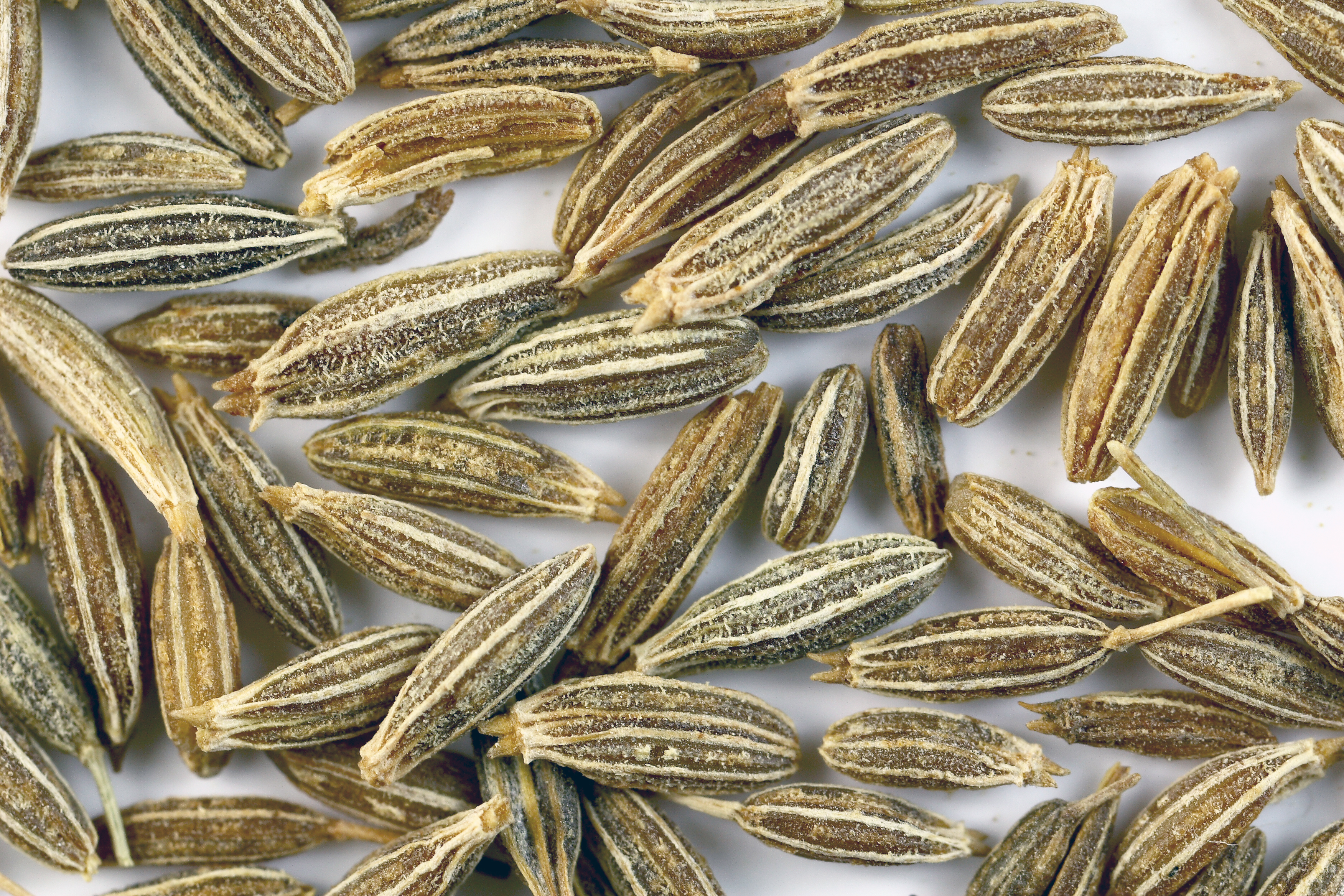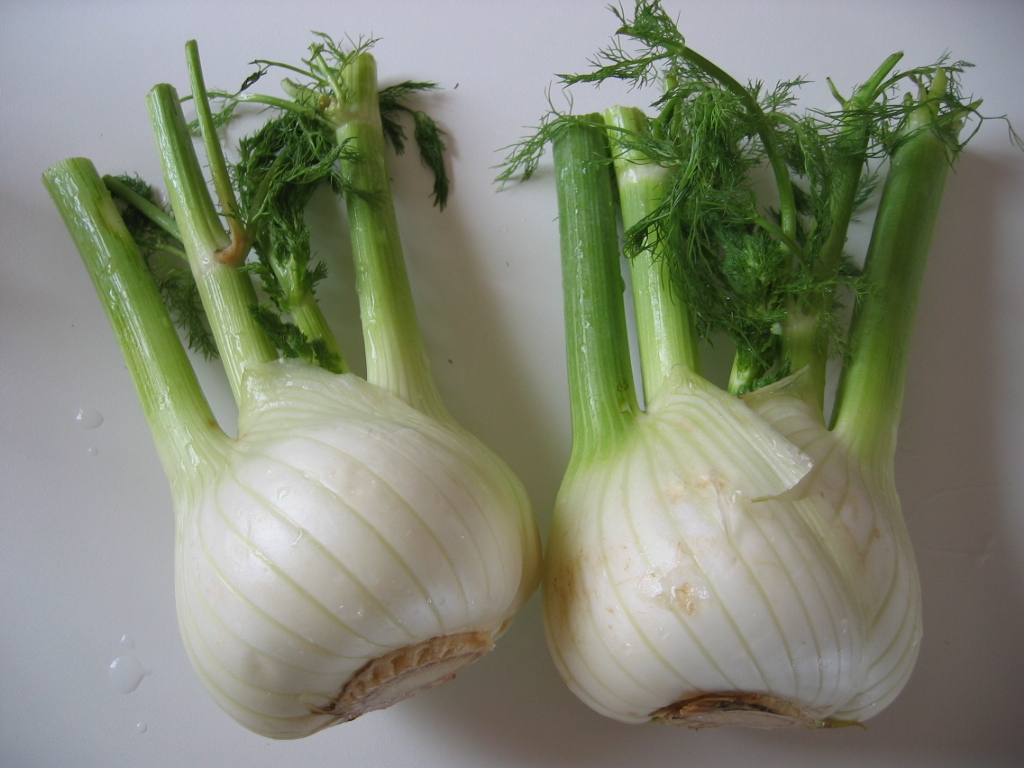梨果仙人掌(
学名:
Opuntia ficus-indica)为
仙人掌科仙人掌属的植物。分布于
台湾、
吉海及红海沿岸、
澳大利亚、
毛里求斯、
南非、
东非、
夏威夷以及
中国大陆的
云南、
广东、
四川、
福建、
贵州、
浙江、
广西等地。
仙人掌是
石竹目仙人掌科(
學名:
Cactaceae)的植物總稱,別名為仙巴掌、仙人扇、霸王樹、火焰、火掌、玉芙蓉、丸、仙肉、仙仙,常生長於
沙漠等乾燥環境中,為
多肉植物的一類。目前仙人掌科的植物將近有2000種。
用途
在
中醫的用途上,仙人掌可作為中藥,如仙人掌屬植物仙人掌(
Opuntia dillenii (Ker-Gawl.) Haw.)及部份同屬其他品種,可以全株入藥,其種籽名為仙人籽。據《
本草綱目》中記載:其味甘性平,補脾健胃,益腳力,除久瀉。其肉質莖含各種營養素,更可取其汁作健康飲料。此外,仙人掌也會開花結果,著名的水果「
火龍果」就是一種雨林仙人掌的果實,多汁甜美。今日仙人掌也是觀景植物的一種。全世界培育仙人掌最有成績的國家是
中南美洲的
墨西哥,該國的
國徽上就有仙人掌的圖樣。而
亞洲地區則以
日本為代表。
http://zh.wikipedia.org/wiki/%E4%BB%99%E4%BA%BA%E6%8E%8C
Food

Peeled fruits of the Indian fig cactus at various stages of ripeness on sale in Mexico
The plant now known as
Opuntia ficus-indica
or the Indian fig cactus has long been an important source of food. The
original species is thought to have come from central Mexico, although
this is now obscure because the indigenous people of southern North
America developed and distributed a range of horticultural varieties (
cultivars),
including forms of the species and hybrids with other opuntias. Both
the fruit and pads are eaten, the former often under the Spanish name
tuna, the latter under the name
nopal. Cultivated forms are often significantly less spiny or even spineless. The nopal industry in Mexico was said to be worth US$150 million in 2007.
The Indian fig cactus was probably already present in the Caribbean
when the Spanish arrived, and was soon after brought to Europe. It
spread rapidly in the Mediterranean area, both naturally and by being
introduced—so much so that early botanists assumed that it was native to
the area. Outside the Americas, the Indian fig cactus is an important
commercial crop in
Sicily,
Algeria and other north African countries. Fruits of other opuntias are also eaten, generally under the same name,
tuna. Flower buds, particularly of
Cylindropuntia species, are also consumed.
Almost any fleshy cactus fruit is edible. The word
pitaya or
pitahaya (usually considered to have been taken into Spanish from Haitian creole) can be applied to a range of "scaly fruit", particularly those of columnar cacti. The fruit of the saguaro (
Carnegiea gigantea) has long been important to the indigenous peoples of northwestern Mexico and the southwestern United States, including the
Sonoran Desert.
It can be preserved by boiling to produce syrup and by drying. The
syrup can also be fermented to produce an alcoholic drink. Fruits of
Stenocereus species have also been important food sources in similar parts of North America;
Stenocereus queretaroensis is cultivated for its fruit. In more tropical southern areas, the climber
Hylocereus undatus provides
pitahaya orejona, now widely grown in Asia under the name
dragon fruit. Other cacti providing edible fruit include species of
Echinocereus,
Ferocactus,
Mammillaria,
Myrtillocactus,
Pachycereus,
Peniocereus and
Selenicereus. The bodies of cacti other than opuntias are less often eaten, although Anderson reports that
Neowerdermannia vorwerkii is prepared and eaten like potatoes in upland Bolivia.
| Cacti as food |

Gathering saguaro in 1907

Edible fruit of the saguaro

Fruits of some Ferocactus are edible.
|

Dragon fruit for sale in Taiwan

Fruit prepared from Stenocereus queretaroensis

Salad including sliced nopales (opuntia pads)
|
http://en.wikipedia.org/wiki/Cactus
Uses

The fruits of
Opuntia ficus-indica as sold in Morocco.
The most commercially valuable use for
Opuntia ficus-indica today is for the large, sweet fruits, called tunas. Areas with significant tuna-growing cultivation include
Mexico,
Spain,
Sicily and the coasts of Southern
Italy,
Greece,
Libya,
Tunisia,
Morocco,
Algeria,
Egypt,
Saudi Arabia,
Yemen,
Israel,
Chile,
Brazil,
Turkey, as well as in
Eritrea and
Ethiopia where the fruit is called beles (
Ge'ez: በለስ). In Sicily, where the prickly pear fruit is known as
ficudinnia (the Italian name being
fico d'India), the cactus grows wild and cultivated to heights of 12–16 feet (4–5 meters).
The fruit ripen from August through October.
The fruit are typically eaten, minus the thick outer skin, after
chilling in a refrigerator for a few hours. They have a taste similar to
a juicy, extra sweet
watermelon.
The bright red/purple or white/yellowish flesh contains
many tiny hard
seeds that are usually swallowed, but should be avoided by those who
have problems digesting seeds.
Jams and jellies are produced from the fruit, which resemble strawberries and figs in color and flavor.
Mexicans have used
Opuntia for thousands of years to make an alcoholic drink called colonche.
In the center of Sicily, in the Province of
Enna, in a small village named
Gagliano Castelferrato, a prickly pear-flavored liqueur is produced called "Ficodi", flavored somewhat like a medicinal/aperitif.
In the early 1900s in the United States, the prickly pear fruit was
imported from Mexico and Mediterranean countries to satisfy the growing
population of immigrants arriving from Italy and Greece. The fruit lost
its popularity during the mid 1950's, but has increased in popularity
since the late 1990s, due to the influx of Mexican immigrants.
Recently, the cattle industry of the Southwest United States has begun to cultivate
O. ficus-indica
as a fresh source of feed for cattle. The cactus is grown both as a
feed source and a boundary fence. Cattle avoid the sharp spines of the
cactus and do not stray from an area enclosed by it. Native prickly pear
growth has been used for over a century to feed them; the spines can be
burned off to reduce mouth injury. The cactus pads, on which the cattle
feed, are low in dry matter and crude protein, but are useful as a
supplement in drought conditions.
In addition to the food value, the moisture content virtually
eliminates watering the cattle and the human effort in achieving that
chore.
Mexican and other southwestern residents eat the young cactus pads (nopales,
plural) (nopal, singular), usually picked before the spines harden.
They are sliced into strips, skinned or unskinned, and fried with eggs
and jalapeños, served as a breakfast treat. They have a texture and flavor like string beans.

Opuntia ficus-indica (Indian fig) flowering in Secunderabad
In Malta, a liqueur called
Bajtra
(the Maltese name for prickly pear) is made from this fruit, which can
be found growing wild in most every field. On the island of
Saint Helena, the prickly pear also gives its name to locally distilled liqueur,
Tungi Spirit.
Other uses include as an ingredient in
adobe (to bind and waterproof).
Opuntia ficus-indica (as well as other species in
Opuntia and
Nopalea) is cultivated in
nopalries to serve as a host plant for
cochineal insects, which produce desirable red and purple dyes. This practice dates from pre-Columbian times.
The plant is considered a pest species in parts of the
Mediterranean Basin due to its ability to spread rapidly beyond the zones it was originally cultivated. In
Hebrew, the plant is referred to as "sabres.
Kishkashta, a main character on a 1970-80s Israeli children's show, "Ma Pit'om", was a large, talking felt puppet of the
Opuntia cactus.
The high levels of
Selenium in
Opuntia are comparable to those found in
Brassicaceae.
The fruit of Opuntia ficus-indica can cause constipation if consumed with the seeds, without the seeds it is laxative.
http://en.wikipedia.org/wiki/Opuntia_ficus-indica























